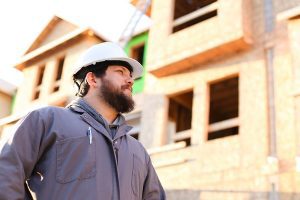Is building with brick a good option for your residential construction company? The answer depends on the preferences of your buyers, cost, how durable the home needs to be, and more. Here are some of the most relevant pros and cons of building new homes with brick.
The Advantages of Brick Homes
Brick homes have certain advantages in terms of maintenance, durability, and eco-friendliness.
1. Brick homes tend to be low maintenance
Brick doesn’t require painting after installation, and it’s not subject to rot or damage from hailstorms. While homeowners have to replace wood siding and trim from time to time, brick typically remains durable for decades after initial construction, unless it endures substantial damage due to tornadoes or earthquakes.
2. Brick is more resistant to fire and infestation
While they aren’t totally fire-proof, brick homes are more resistant to fire damage. Since it doesn’t aid in the spread of fire, brick can help contain a fire within a home and prevent it from spreading. Brick is also resistant to termite and other types of insect infestations. Unlike wood, it can also withstand damage caused by nesting birds.

3. Brick is eco-friendly
Since it’s made of two of the earth’s most abundant natural resources (clay and shale), brick often appeals to buyers who favor eco-friendly and zero-energy homes. Eco-friendly homes are becoming more popular every day. Even better, if builders have leftover brick after construction, they can use it to line patios or create walls for raised-bed gardens.
4. Brick provides better temperature control
When combined with quality insulation, brick helps stabilize interior temperature and delay the movement of heat through walls. During the winter, heat stays inside. During the summer, interiors stay cooler. Brick can also block more sound from outside compared to wood and vinyl siding, even with thick insulation as a buffer.
You Build it, We'll back you up.
Learn why so many builders enroll their homes in the 2-10 New Home Warranty Program.
The Downsides of Brick Homes
On the other hand, brick has downsides in terms of cost and customization.

1. It’s more expensive
Brick homes are more expensive than stick-built homes. On average, brick exteriors also cost around 6%–7% more than vinyl siding. While that might not seem like a big difference, the costs can add up fast depending on the total size of the home. To offset material and labor costs, builders typically have to charge more for a new brick home.
2. There aren’t that many options
Since brick is made from natural materials, builders only have a few color options to choose from — generally a series of browns, reds, and grays. Although brick can be painted, painting brick can be labor-intensive. In addition to priming the surface, painters usually have to use brushes and rollers to force paint into tiny holes and cracks, since spray rigs have difficulty thoroughly coating porous brick surfaces. Homeowners also need to repaint every couple of years to keep brick exteriors from chipping and/or fading.
3. Repointing is sometimes necessary
Every now and then, homeowners will have to pay to replace pointing (the mortar used to keep the bricks together). While you’ll certainly commit to proper pointing, repointing may still be necessary even under perfect conditions. Since this can be an intensive and expensive repair, some homeowners are leery of brick homes.
4. You get what you pay for
While cheap, poorly made bricks can save builders money, they are porous. This increases the risk of moisture issues, mold problems, and cracks. Since knowledgeable buyers and real estate agents will be wary of such issues, it’s important for builders to make sound buying choices when selecting construction materials.

Protect Your Homes With Quality Coverage
Whether you choose brick-built, stick-built, or otherwise, providing a structural warranty is your obligation. As the industry leader in structural warranty administration, 2-10 Home Buyers Warranty (2-10 HBW) is the name builders trust to protect their profits, reputations, and buyers.
Even the best builders face the risk of unexpected structural defects affecting their business. Worse still, the average structural claim can cost $70,000 per claim. With a 2-10 HBW Structural Warranty, you can mitigate those risks and move forward by controlling what’s behind you.








